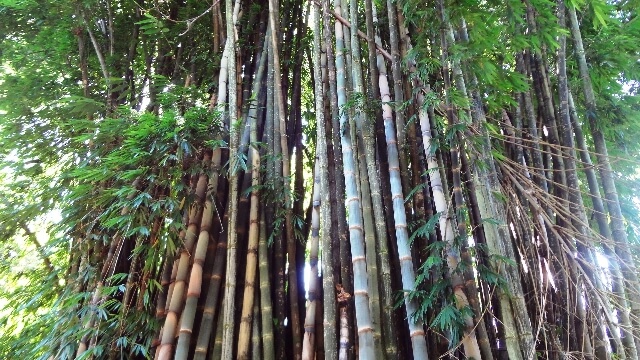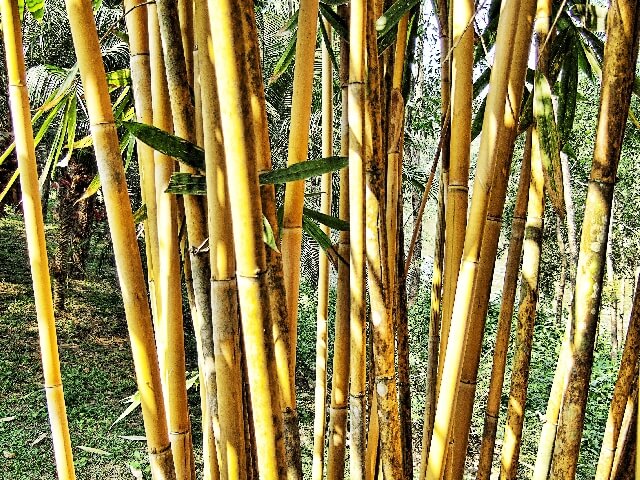For the past few years, bamboo has taken over the green marketplace. More bamboo items continue to replace things such as cotton and plastic.
From eating utensils to clothing to toothbrushes, you can’t go anywhere without seeing something new and innovative made out of this material.
But is bamboo eco-friendly? The answer is yes. Bamboo is a natural resource, meaning that it is eco-friendly. It’s also one of the most sustainable vegetation on Earth.
Here’s how bamboo is eco-friendly:
What is Bamboo?
Bamboo is a type of grass that can grow as tall as 100 feet. There are more than 1600 known bamboo species.
Researchers believe that Asia (current China) is where bamboo originated and still grows in large numbers. However, bamboo can grow even in the most temperate climates worldwide.
Bamboo fiber often gets harvested and converted into materials like:
- Paper
- Wood
- Fabric
But it’s worth noting that bamboo is not a tree and doesn’t botanically create wood.
Is Bamboo Eco-Friendly?
Eco-friendly is a term usually used to describe products, materials, or activities that pose little to no environmental harm. Such products or materials are often natural resources that can naturally exist or biodegrade without negatively affecting the environment.
Since bamboo is a natural resource, it’s regarded as eco-friendly. It is a sustainable natural resource with many benefits. But what makes bamboo eco-friendly?
Here are the top reasons why bamboo is eco-friendly:
1. Bamboo is Easy to Grow
As you already know, bamboo is a kind of grass, meaning it can grow and survive on nearly all soil types.
You also don’t need to clear forest areas or destroy natural habitats with rich soil to grow bamboo.
Unlike crops that people grow for domestic or commercial purposes, growing bamboo is effortless. It doesn’t require a lot of care.
For example, you don’t need expensive machinery to clear weeds or plow the fields to plant bamboo. As a result, there’s no fossil fuel burning involved.
Bamboo also doesn’t require fertilizers and consumes fewer resources such as water and acreage, making it more eco-friendly. Most plant fertilizers used today have petroleum-based products and chemicals that can harm the environment.

2. Bamboo Grows Faster
Do you know that a bamboo species is the Guinness World Record holder for the fastest growing plant? Bamboos are generally one of the fastest-growing plants worldwide, making them a highly eco-friendly and sustainable resource.
When you plant bamboo, you can expect to harvest it in about 3-5 years. As for a tree, you can harvest timber in about 35-45 years.
Even if the demand for bamboo is high, the plant will replenish much faster because deforestation is unlikely.
And we all understand how dangerous deforestation can be to our planet.
Since bamboo is a highly sustainable and renewable material, there’s no need to replant it after harvesting.
Bamboo will regrow naturally from its roots, reducing the resources required to grow a new bamboo forest after harvest.
Bamboo roots firmly anchor the soils, thus indirectly protecting the environment by reducing soil erosion. Even bamboo harvesting doesn’t result in soil erosion or disturb the soil’s nutrient cycle.
3. Bamboo is Biodegradable
Like any other natural plant, bamboo is biodegradable. Microbes such as bacteria and fungi, including natural factors, can break down the bamboo into simpler organic compounds through decomposition.
Unlike plastic, products made of bamboo won’t stay longer in landfills after throwing them away. Bamboo is also recyclable, reusable, and compostable.
4. Harvesting Bamboo doesn’t need Heavy Machinery
Harvesting bamboo often involves manual labor and simple sharp tools such as:
- Saw
- Bolo
- Small ax
In most cases, harvesting bamboo doesn’t require fossil-fueled machines. Transporting bamboo is easy due to its lightweight and results in lesser carbon emissions. People living in remote areas use farming animals like horses or cows to transport bamboo.
5. Bamboo Reduces Greenhouse Gas Emissions
Another thing that makes bamboo eco-friendly is its ability to absorb harmful greenhouse gasses such as carbon dioxide (CO2) in the atmosphere.
This results in cleaner and safer breathable oxygen.
Carbon dioxide is a popular greenhouse gas that greatly contributes to global warming and climate change. A bamboo forest can generate about 35% more oxygen than a tree forest covering the same area.
Is Bamboo More Eco-Friendly Than Cotton?
Yes, bamboo fabric is an excellent and more eco-friendly alternative to cotton.
Here’s why:
- Bamboo is incredibly easier to grow and nurture than cotton.
- It requires fewer resources like water to survive than cotton.
- Bamboo doesn’t require fertilizers to grow, hence more eco-friendly than cotton, which contributes to nearly 25% of the globe’s insecticide usage.
- Unlike cotton, harvesting bamboo doesn’t kill the entire plant and requires no uprooting.
- Harvesting bamboo involves fewer machinery that operates on fossil fuels
Is Bamboo More Eco-friendly than Plastic?
Yes. bamboo is more eco-friendly than plastic since it is an all-natural resource. Pollution resulting from plastic waste is a significant concern today. But eco-friendly alternatives such as bamboo products can help protect and save our planet.
Bamboo products are the best alternatives to single-use plastic products that quickly fill up water bodies and landfills.
You can find various bamboo products on the market, and they are growing in popularity every day due to their eco-friendliness.
Examples of bamboo products replacing regular plastic products include:
- Bamboo straws
- Apparels
- Toothbrushes
- Water bottles
- Combs
- Bedsheets, etc.
Overall, bamboo products are sustainable and biodegradable, meaning they have little or no harm to the environment.
Is Bamboo More Eco-Friendly Than Wood?
While wood is a natural and sustainable resource, bamboo is slowly replacing more wood products like:
- Toilet paper
- Kitchen utensils
- Cutleries
- Packaging
- Furniture, etc.
The reason is that bamboo is more eco-friendly than wood. Unlike wood or timber, bamboo is easier to cultivate and takes a little time to harvest.
When properly harvested, a bamboo plant can serve as a timber source.
Besides, bamboo quickly regrows from its roots after harvesting, and that’s not the same thing with most tree species.
Conclusion
Bamboo is incredibly an eco-friendly and sustainable resource. From planting to harvesting, bamboo doesn’t need heavy machinery that operates on fossil fuels.
They cause little or no harm to the environment as other materials do.
Bamboos are easy to grow and cultivate as they consume lesser resources like water and fertilizer.
It’s also biodegradable and helps minimize greenhouse gas emissions. More importantly, bamboo is more eco-friendly than plastic, wood, and cotton.



